Storz blind caps: Rigorous manufacturing standards, important design choices, and a bit of plumbing history
A fire hydrant or a fire sprinkler system inlet without a cap or plug is a rare sight—and cause for concern. Whether it’s protecting inlets from damage or allowing fire hydrants to keep water at sufficient pressures, caps are an indispensable part of the water-based systems that keep fires in check.
In this article, we talk about Storz blind caps—the most common kind of Storz cap—and how they serve threadless Storz fire department connections and fire hydrant Storz connections. We explain what Storz connections and blind caps are, why they are made from aluminum, how different gaskets can significantly impact usability, and much more.
If you’d like to take a look at our line of 4″ and 5″ Storz caps instead, click here.
Storz connections provide a nonthreaded alternative to traditional couplings
Couplings are found on fire hydrants, fire hoses, and a range of other equipment designed to safely move water from one place to another. Broadly speaking, two types of coupling are used in the fire service: threaded couplings and nonthreaded couplings.
Threaded couplings have long been the default for fire equipment in the United States. Like threaded nuts and bolts, complementary pairs of male and female couplings screw together, allowing fire hose to deliver water from a water source to hose nozzles, fire engines, and other equipment.
Storz couplings, on the other hand, are a type of nonthreaded coupling. Often used with a large-diameter hose, these connections feature hooks and slots that facilitate connections between any two Storz couplings of the same size. They connect quickly, securing with only a quarter-turn, and eliminate the problems firefighters face when they inadvertently end up needing to connect two male or two female couplings together.
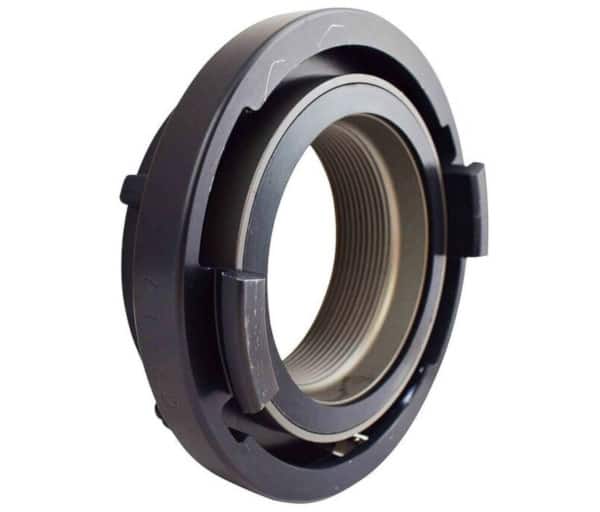
Blind caps, used with threaded and nonthreaded fittings, close off pipe ends
The terms “cap” or “plug” are often applied to threaded pipe fittings. A plug features male threads designed to thread into a female fitting, while caps often—but not always—feature female threads that wrap around a male-threaded pipe end. Some caps, like those used on FDCs, are simply a disc that secures to the front of the swivel.
With threaded fittings, the distinction is important: the water-discharging orifice at a fire hydrant typically features male-threaded fittings. An appropriately-sized cap would provide proper closure, but the same size plug wouldn’t be able to connect. Conversely, fire department connections—inlets used by firefighters to provide supplemental water to fire sprinkler and/or standpipe systems—feature female-threaded swivels that often use plugs for closure.
But Storz connections have no gender and no threads of any kind. There aren’t any Storz plugs—just Storz caps. Like other devices with Storz couplings, Storz blind caps feature hooks and slots made to connect to any Storz coupling of the same size.
While a definition for the term “blind cap” is hard to come by, what all blind caps share in common is the ability to close a pipe. Plumbers have described similar devices as blind caps for more than a century, with some 19th-century uses of the term describing fittings used to conceal bolts hidden in pipe ends on wall-mounted urinals.
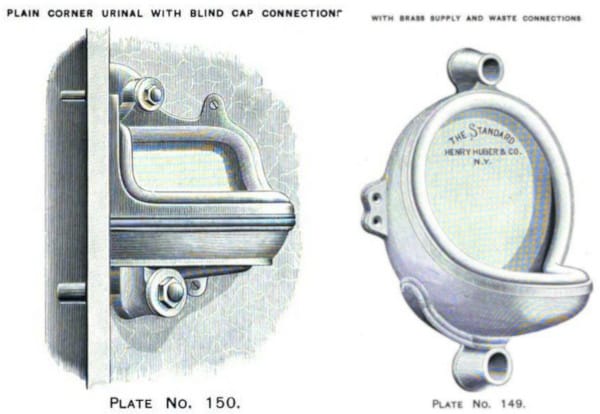
While blind cap appears to be the more common term in the United States, both “blank cap” and blind cap were (and still are) used generally to mean a cap designed to close off the end of a pipe. The term appears to be closely related to a manufacturing process described as blanking. In engineering and manufacturing, blanking has long referred to a process where metallic fittings are cut from a solid sheet of metal. The blank filled in the empty space—much as today’s blank caps, or blind caps, fill in the open space at a pipe’s end.
Storz blind caps have important applications in and out of the fire service
While they’re largely used with fire department connections and hydrant connections, Storz caps can be useful almost anywhere Storz-coupled hose is used. Chemical production facilities, steel mills, and bulk transport tanks utilize Storz caps and couplings to move powders, granulates, and liquids from one location to another.
In the fire service, Storz blind caps are found with either fire hydrants or fire department connections. The National Fire Protection Association (NFPA), the leading organization for fire code development in the United States, requires protective caps or plugs on every FDC. For fire sprinklers, this requirement is found in NFPA 13: Standard for the Installation of Sprinkler Systems. For standpipes, a nearly identical requirement can be found in section 4.8.3 of NFPA 14: Installation of Standpipe and Hose Systems.
From the 2019 edition of NFPA 13
16.12.3.2 Fire department connections shall be equipped with approved plugs or caps, properly secured and arranged for easy removal by fire departments.
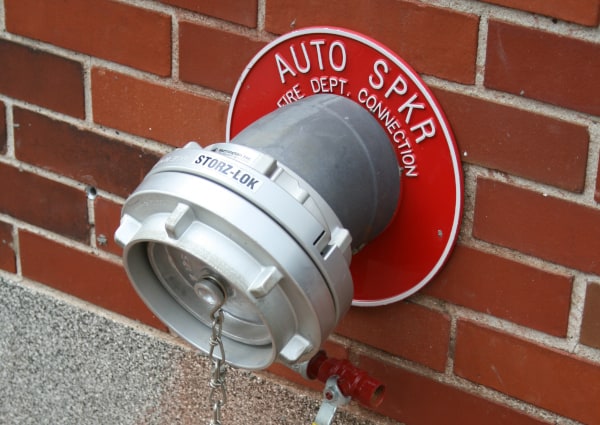
For fire department connections, the primary purpose of caps or plugs is to protect inlets against debris, dirt, weathering, and other conditions that might render it inoperable in the event of a fire. Firefighters have similar concerns when it comes to fire hydrants, but with one huge addition: a missing cap on a hydrant with multiple hose connections can make it difficult to access water at all. Without blind caps, water will escape from every open nozzle, significantly diminishing water pressure from the hydrant.
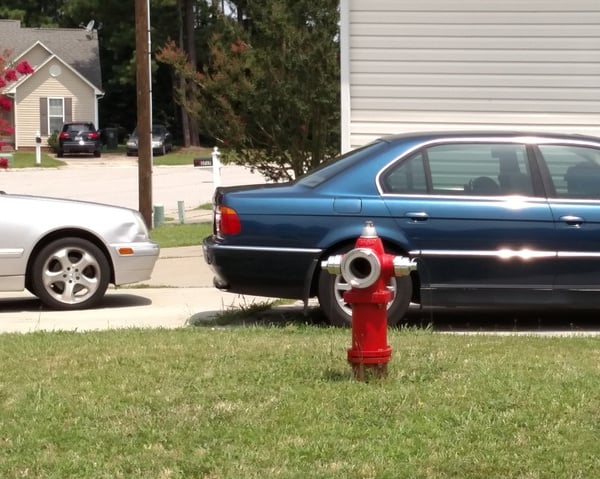
Made with a specialized aluminum alloy, most Storz blind caps meet international standards for use under pressure
Storz blind caps are generally made from 6061-T6 aluminum to resist the pressures experienced at fire hydrants. This alloy, which is also almost universally used in the construction of Storz FDCs and Storz fire hydrants, features a mixture of magnesium and silicon. It’s these additional elements that allow the aluminum to be further strengthened through a process known as heat treatment. Manufacturers also favor 6061-T6 aluminum because it can be easily shaped with a metal die in a process called extrusion.
Many of these Storz caps are manufactured to meet various standards from the DIN (Deutsches Institut für Normung eV), a German organization that develops standards for everything from fire hose fittings to international paper sizes. The DIN publishes standards for the design of Storz fittings in several volumes, including standards that require that Storz connections be made from forged aluminum.
One common alternative to forged aluminum—cast aluminum—lacks the strength needed for high-pressure applications and is thus not allowed under DIN standards. While they may be suitable for low-pressure applications, such as irrigation, cast fittings exhibit stress fractures when placed under pressure and have significantly less structural strength.
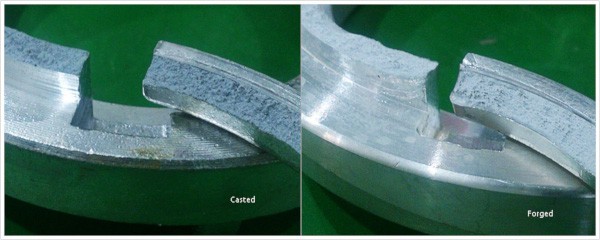
Finishes protect the Storz cap’s exterior and can make caps compliant with NFPA color-coding guidelines
While the options for coatings vary with each manufacturer, most offer coatings that provide corrosion-resistance and strength to the cap’s exterior. These coatings often adhere to a Department of Defense specification: MIL-A-8625 Type III. To meet this standard, Storz caps are submerged in an electrically-charged acid bath, giving them a permanent hard coating that resists corrosion and abrasion.
Some manufacturers may use a different coating—or even add additional layers of protection. Powder-coating, while more susceptible to corrosion and wear, is available in a range of colored finishes. And some manufacturers offer specialized, colored anodic coatings with even greater corrosion resistance.
Some jurisdictions may also require color-coding for Storz blind caps used with fire hydrants. NFPA 291: Recommended Practice for Fire Flow Testing and Marking of Hydrants uses a color-coding scheme that tells firefighters how quickly a hydrant can flow water that has 20 pounds per square inch (PSI) of pressure. These requirements for hydrant tops and blind caps, which can be found in sections 5.1 and 5.2.1.2 of NFPA 291, are:
- Less than 500 GPM: Red
- 500-999 GPM: Orange
- 1000-1499 GPM: Green
- 1500 or More GPM: Light Blue
Gaskets make Storz caps better-suited for either suction or pressure applications
NFPA 1963: Standard for Fire Hose Connections serves as a model for the selection of fire hose couplings, caps, and other fittings in many jurisdictions. All Storz caps that comply with these standards require gaskets.
From the 2019 edition of NFPA 1963
6.6* Caps. All nonthreaded caps shall have gaskets installed.
A.6.6 Suction gaskets will work in both pressure and suction applications but are difficult to compress by hand when mated to a pressure connection. In some areas a more tamper-resistant nonthread cap could be desired by the end user. Caps with a force between 6 lbf in. and 30 lbf in. to remove are considered readily removable by hand. Caps with a force between 168 lbf in. and 321 lbf in. to remove generally would require the use of a tool to remove.
Storz blind caps feature either a suction seal or suction gasket. Suction gaskets are made for use with a hard-suction hose—used when pumping water from an unpressurized source—and designed to form an air-tight seal when the Storz cap is secured to another Storz coupling. Some firefighters report that couplings with these gaskets are difficult to secure or remove from a Storz fire hydrant connection without help from a spanner wrench.
Storz pressure gaskets, while similar, are thinner. Blind caps with pressure gaskets will only form a water-tight seal when placed under pressure. But in many cases, manufacturers seem to default to suction gaskets, perhaps as an anti-theft measure; ones that require a special wrench to remove are more difficult to steal. But while caps with suction gaskets work for both pressure and suction applications, Storz caps with pressure gaskets require anywhere from 6 to 50 times less force to remove, making them preferable at many hydrants.
If you’ve tried lubricating the gaskets on your hydrant—but find the cap hard to secure or remove—you may have the wrong gasket. Many Storz fire department connections and Storz fire hydrant connections are suitably served by a blind cap with a pressure gasket.
And because most manufacturers develop Storz caps to the standards of NFPA 1963, identifying which kind of gasket you have is relatively straightforward. Sections 7.2.3.1 and 7.2.3.2 of the standard require the use of black pressure gaskets on Storz caps and other nonthreaded connections, and gray gaskets for suction.
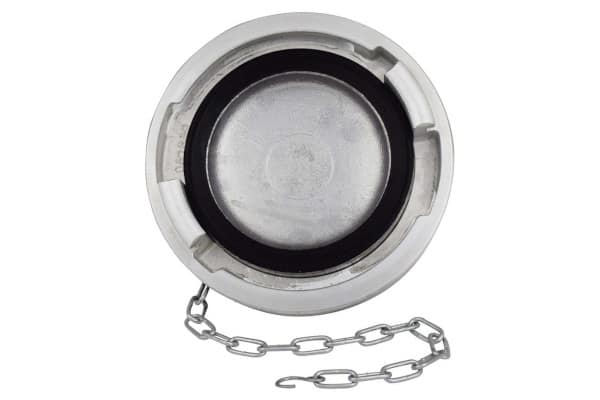
These gaskets may be made of a variety of materials, but often use the NBR synthetic rubber gaskets found in valves, O-rings, and in other applications where water resistance is required. What makes NBR ideal for use with Storz caps and in other firefighting applications is its resistance to abrasion, compression, and some petroleum liquids.
Some other basic features are worth keeping in mind while selecting a Storz blind cap
NFPA-compliant Storz caps installed on fire department connections must be able to indicate to firefighters when there’s pressure behind the cap.
From the 2019 edition of NFPA 1963
6.6.2* The cap used for a nonthreaded fire department connection shall be provided with a means of indicating water pressure behind the cap.
A.6.6.2 A 1/8 in. (3.18 mm opn) diameter or larger hole in the cap that could be exposed to internal pressure can be used to indicate water is present.
Whether it’s a bleeder port or some other opening at least 1/8″ in size, these openings let firefighters know when a cap is under pressure and allow water to escape until the cap can be safely removed.
Storz blind caps also typically feature a cable or chain designed to permanently secure the cap to the hydrant. Some use vinyl-coated aircraft cables, favored in cargo handling, zip-lining, and weight machines for their high strength and durability. Others use chains made from various metals, including plated steel. These cables or chains are generally long enough to allow the cap to hang out of the way of the hydrant’s nozzle while still short enough to keep the cap near the hydrant.
Finally, most manufacturers or distributors will make the most common sizes for firefighting—4″ and 5″ Storz caps—readily available. Less often, manufacturers will list 6″ caps for especially large hose or some Storz dry hydrants, and some others sell Storz blind caps as large as 12″ in size for super-large-diameter hoses used in industrial firefighting and super-high-volume water transfers.
Stay safe and up-to-code with QRFS’s stock of American-made Storz caps
Fyrelane USA, a Texas-based manufacturer of Storz caps and other fire protection equipment, offers a line of fire-grade Storz blind caps for Storz fire department connections and Storz fire hydrant connections. Their Storz caps feature a forged 6061-T6 aluminum coupling and a durable, heat-treated sand-cast insert. Available with 4″ and 5″ Storz connections, these caps are designed to withstand pressures experienced at fire hydrants and are available with a pressure gasket (4″ Storz) or suction gasket (5″ Storz).
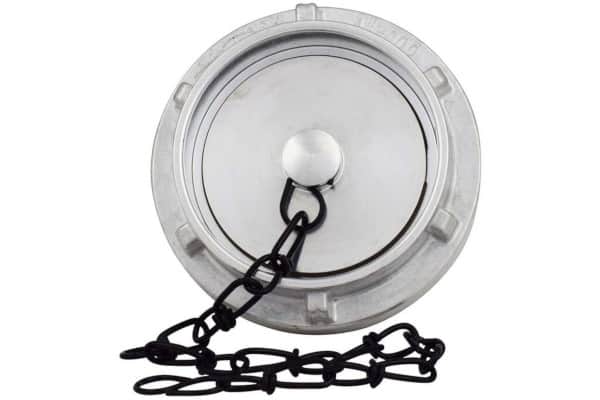
For applications where pressure isn’t a concern, Fyrelane also manufactures heavy-duty composite hydrant snap caps. These lightweight, quick-connecting caps keep grime, ice, and snow off Storz connections.
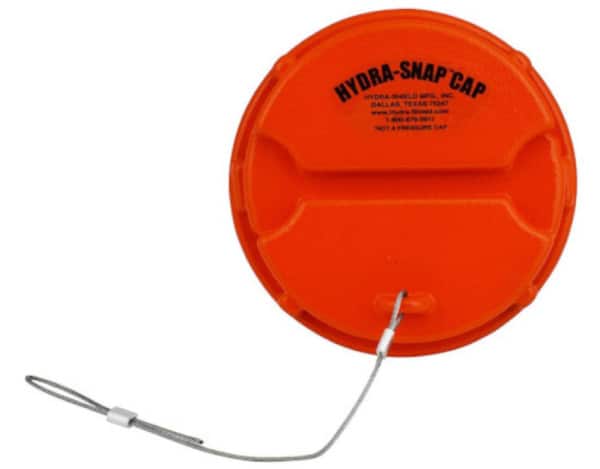
Check out QRFS’s selection of well-built, American-made Storz caps for Storz fire department connections and Storz fire hydrant connections.
Questions about Storz blind caps? Call us at +1 (888) 361-6662 or email support@qrfs.com.
This blog was originally posted at blog.qrfs.com. If this article helped you protect your Storz fire department connection or Storz fire hydrant connection, check us out at Facebook.com/QuickResponseFireSupply or on Twitter @QuickResponseFS.


1. Item : Storz Cap and Chain (instead of storz)
2. Size : 2-1/2”
3. Material : Cap (PVC), Chain (Stainless Steel)
4. Q’ty : 214 EA
5. Color : manufacturer’s standard(RED is preferred)
**Purpose : for Portable Monitor, 2-1/2” Coupling (Indian/Chinese materials are not allowed)
certificate of conformance should be needed.
Thank you for reaching out. We will have someone from our QRFS Customer Support Team contact you, and you can also email them any requests there to get faster service!